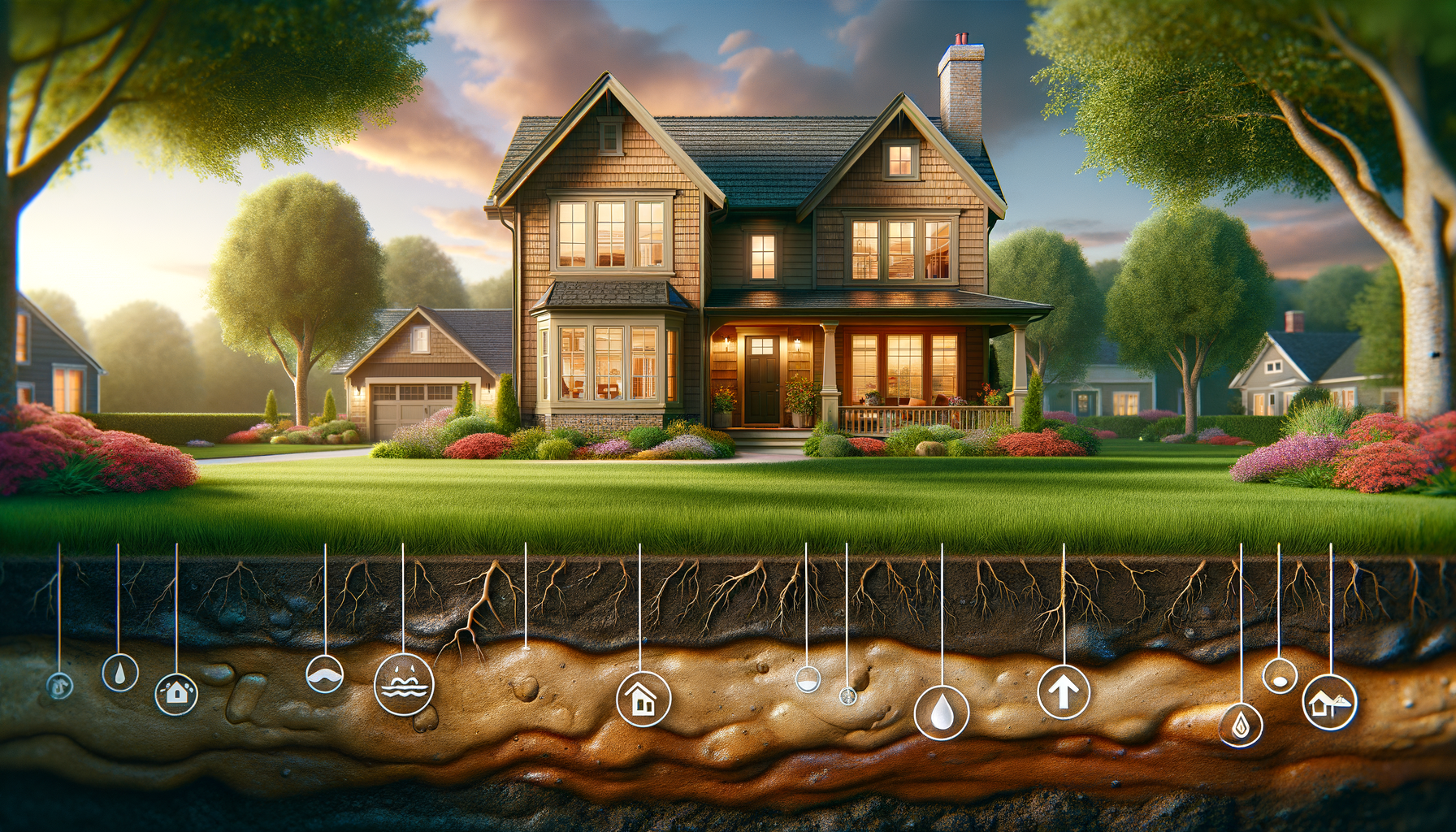When your home’s foundation has leaks, figuring out how much repairs will cost can be confusing and worrying. This guide will help you understand the different parts of finding and fixing foundation leaks. Whether it’s a small wet spot or a bigger problem, knowing what to expect can help you make the best choices for your home.
Finding Foundation Leaks and What Causes Them
Signs of a Foundation Leak
Finding a foundation leak early can save you a lot of money and trouble later on. Here are some things to look out for:
- Cracks in Walls: Look for breaks or splits in the walls, both inside and outside.
- Damp Spots: Check for wet or damp areas on the floor or walls.
- Unwanted Moisture: Notice if there’s any lingering water, especially after rain.
- Mold Growth: If you see mold or smell a musty odor, it might mean there’s moisture.
Common Causes of Foundation Leaks
Knowing why your foundation is leaking can help you fix it better:
- Soil Settling: When the ground under your house moves, it can cause the foundation to shift.
- Poor Drainage: If water isn’t directed away from your house, it can cause leaks.
- Extreme Weather: Heavy rain or long droughts can make the soil unstable.
- Plumbing Issues: Leaky pipes can add moisture to the foundation.
Checking the Damage
Surface Inspection
First, take a good look at the surface to check for damage:
- Visible Cracks: Look for cracks in the walls or floors.
- Water Stains: Check for discoloration or damp marks.
Professional Assessment
Sometimes, you need an expert to check things out:
- When to Call an Expert: If cracks are larger than a quarter-inch, or if there’s a lot of water damage, it’s time to call a professional.
Types of Damage
Different types of damage need different fixes:
- Minor Cracks: Small cracks that are usually just cosmetic.
- Structural Issues: Bigger cracks or shifts that can seriously affect your home’s stability.
What Affects Repair Costs
Severity of the Leak
How bad the leak is will affect the cost:
- Surface Moisture: Easier and cheaper to fix.
- Deep Foundational Damage: More extensive and costly repairs needed.
Type of Foundation
The kind of foundation your home has also matters:
- Slab: A flat concrete foundation, often cheaper to repair.
- Basement: Needs work inside and outside.
- Crawl Space: May need more access points for fixing.
Repair Method Required
Different repair methods cost different amounts:
- Simple Patches: Quick and cheap for small cracks.
- Extensive Structural Repairs: Needed for serious damage, more expensive.
Material Costs
The materials used for repairs will also affect the cost:
- Concrete: Often used for structural fixes.
- Sealants: Needed to keep water out after repairs.
- Waterproofing Membranes: Extra protection against moisture.
Breakdown of Costs
Inspection Fees
Professional assessments are the first step:
- Average Costs: Typically $300–$500.
Basic Repairs
Fixing small issues costs less:
- Filling Small Cracks or Holes: Around $300–$800.
Moderate Repairs
More serious issues cost more:
- Sealant Injection, Patchwork, Waterproofing: Usually $1,000–$4,000.
Major Repairs
For big problems, be prepared to spend more:
- Structural Repairs, Underpinning, Extensive Waterproofing: Can be $5,000–$15,000 or more.
DIY vs. Professional Repairs
When DIY is Possible
For small problems, you might fix them yourself:
- Small Cracks: Use sealant or patching kits from a hardware store.
- Applying Sealant: Use products like epoxy or polyurethane.
Benefits of Hiring Professionals
Professionals have advantages like:
- Expertise: They know what they’re doing.
- Equipment: They have specialized tools.
- Long-Term Fixes: They provide thorough repairs to prevent future problems.
Cost Comparison
Comparing DIY and professionals can help you decide:
- DIY Costs: Lower upfront cost.
- Professional Repairs: Can save money in the long run by avoiding repeated problems.
Preventing Future Leaks
Proper Drainage Systems
Good drainage is crucial:
- Gutters and Downspouts: Make sure they direct water away from your house.
- Proper Grading: The ground should slope away from the foundation.
Regular Inspections
Check your home regularly:
- Routine Checks: Inspect every spring and fall, or after big storms.
Waterproofing Solutions
Investing in waterproofing can prevent future costs:
- Exterior Waterproofing: Apply waterproof coatings outside the foundation.
- Interior Sealants: Use waterproof paints and sealants inside.
Real-World Costs in Canada
Regional Differences
Costs can vary by location:
- Average Costs in Different Provinces: Urban areas or places with extreme weather might have higher costs.
Case Studies
Examples from other homeowners can help:
- Ontario Homeowner: Spent $3,500 on moderate repairs.
- British Columbia Homeowner: Spent $7,000 for major waterproofing and structural repairs.
Financing and Insurance
Loans and Credit
Financing options can help manage costs:
- Home Equity Loans and Lines of Credit: Often have lower interest rates than personal loans.
Insurance Coverage
Know what your insurance covers:
- Check Policies: See if your homeowner’s insurance covers foundation leaks, especially from sudden events.
FAQs on Foundation Leak Repairs
How long do repairs take?
- Could be a few hours for small cracks or several weeks for extensive work.
Can leaks be totally prevented?
- You can’t completely prevent them, but good construction, maintenance, and waterproofing help a lot.
What are urgent signs?
- Large or growing cracks, lots of water, mold, or shifting in your home.
How do I choose a good contractor?
- Look for good reviews, proper licenses, insurance, and successful past jobs. Personal recommendations and detailed estimates are also helpful.
Understanding foundation leak repairs doesn’t have to be overwhelming. Knowing the signs, causes, and costs can help you take care of your home. Stay on top of maintenance and don’t hesitate to seek expert help when you need it.


Leave a Reply